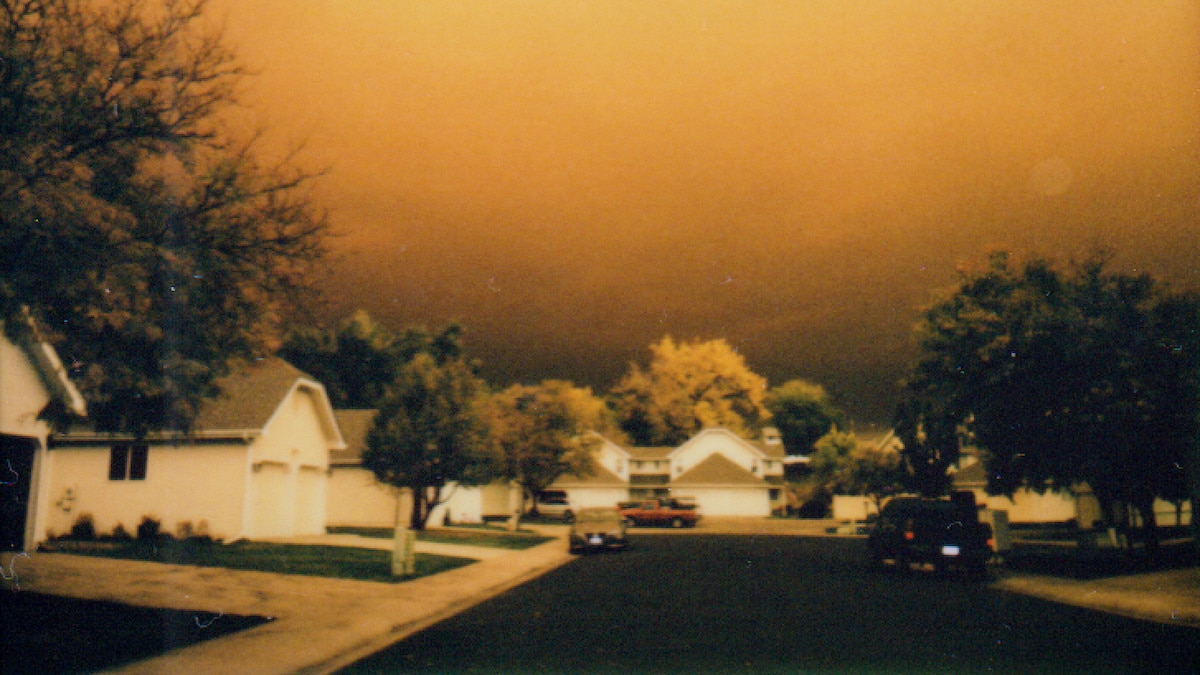

Smoke from the East Troublesome fire in Colorado on Oct. 22, 2020. RubyT / Flickr
Thousands of homes were evacuated Wednesday after a Colorado wildfire exploded in size, growing at a rate of 6,000 acres per hour.
The East Troublesome fire had been burning since Oct. 14, but suddenly took off Wednesday in a more erratic manner than even worst-case-scenario predictions had anticipated, Grand County Sheriff Brett Schroetlin said, as The Colorado Sun reported. The fire had grown to 125,600 acres by Thursday morning and 170,163 acres by Thursday evening, making it the second-largest wildfire in Colorado history. It is only five percent contained, according to InciWeb.
“The growth that you see on this fire is unheard of,” Schroetlin said during a Thursday press conference reported by NPR. “We plan for the worst. This is the worst of the worst of the worst. And no matter how we look at it, we can’t control Mother Nature.”
Heartbreaking video of homes burning in the #EastTroublesomeFire overnight. Listening to scanners right now and firefighters are making tough choices trying to figure out which homes they can save. pic.twitter.com/5NhlbPdioH
— Emily Allen (@EmilyAReports) October 22, 2020
Schroetlin said Thursday morning that there was “lots of structure loss,” according to The Colorado Sun, though no official tally of damage has been reported. As many as five people were unaccounted for by Thursday evening. However, there have been no reports of deaths or injuries.
The fast-moving fire was first driven by high winds into the town of Grand Lake Wednesday night, Colorado Public Radio (CPR) reported.
“It was basically out of a movie,” retired newscaster Ernie Bjorkman told CPR. “It was a firestorm in downtown Grand Lake. Smoke and embers flying around. It was just a chaotic scene. We locked the door and said, ‘hopefully, house, we’ll see you when we get back.’ “
As of Thursday, town manager John Crone told CPR that the town’s historic Grand Lake Lodge and downtown area had not burned.
The fire then crossed the Continental Divide by 1:15 pm Thursday, according to The Colorado Sun. It also entered Rocky Mountain National Park, forcing it to close.
Latest satellite info shows increased fire intensity on the #EastTroublesomeFire early this afternoon. The fire has jumped the Continental Divide and is now burning in the upper reaches of Rocky Mountain National Park. #COwx pic.twitter.com/6onPKwCfi4
— NWS Boulder (@NWSBoulder) October 22, 2020
The flames also menaced the park gateway town of Estes Park, filling it with smoke Thursday morning.
“The air quality has just decreased to a level that’s almost unsafe to go outside,” resident Alec Rogers told CPR.
Estes Park was also put under an evacuation order Thursday, and traffic stalled as people tried to leave.
PHOTOS: The sky has gone from yellow to orange. There is a long line of cars waiting to leave Estes Park. #EastTroublesomeFire #EstesPark pic.twitter.com/22iWHB4B9b
— Matthew Jonas (@photojmatthew) October 22, 2020
However, incident commander Noel Livingston said Thursday that a cold front had checked the fire somewhat as it burned inside Rocky Mountain National Park and that it was no longer headed towards Estes Park, The Colorado Sun reported.
The concern is now that the fire will merge with the Cameron Peak fire, the largest fire in Colorado history, which is burning only 10 to 12 miles away. Livingston said he thought a merger was unlikely, but not impossible.
“This year has been one of those years when low-potential events seem to be happening with high frequency,” Livingston said, as The Colorado Sun reported.
Officials are hopeful that snow forecast for this weekend will help them to get the fire under control, CNN reported.
The rapid growth of the East Troublesome fire is only the latest development to scorch the fire-weary Western U.S. this year. Its explosion to the second-largest fire in state history means that three of Colorado’s five largest fires have now ignited in 2020.
The fire was driven quickly east by a combination of high winds, dry air and the fuel provided by lodgepole pines killed by beetles, InciWeb said. However, the climate crisis is creating ideal conditions for fire across the West. Almost all of Colorado was experiencing drought by the end of September, according to NPR. Fire scientists told The New York Times that fires burning so close to winter in Colorado show how the season has grown because of changing conditions.
“People have built and developed in these areas without recognizing the hazard they’re in, and climate change is notching that up every year,” University of Montana fire ecologist Philip Higuera told The New York Times. “It has me concerned for communities across the West that are in increasingly flammable landscapes.”
- Colorado Wildfire Forces 1,000 to Evacuate - EcoWatch
- Colorado Battles Largest Wildfire in State History - EcoWatch

 233k
233k  41k
41k  Subscribe
Subscribe 